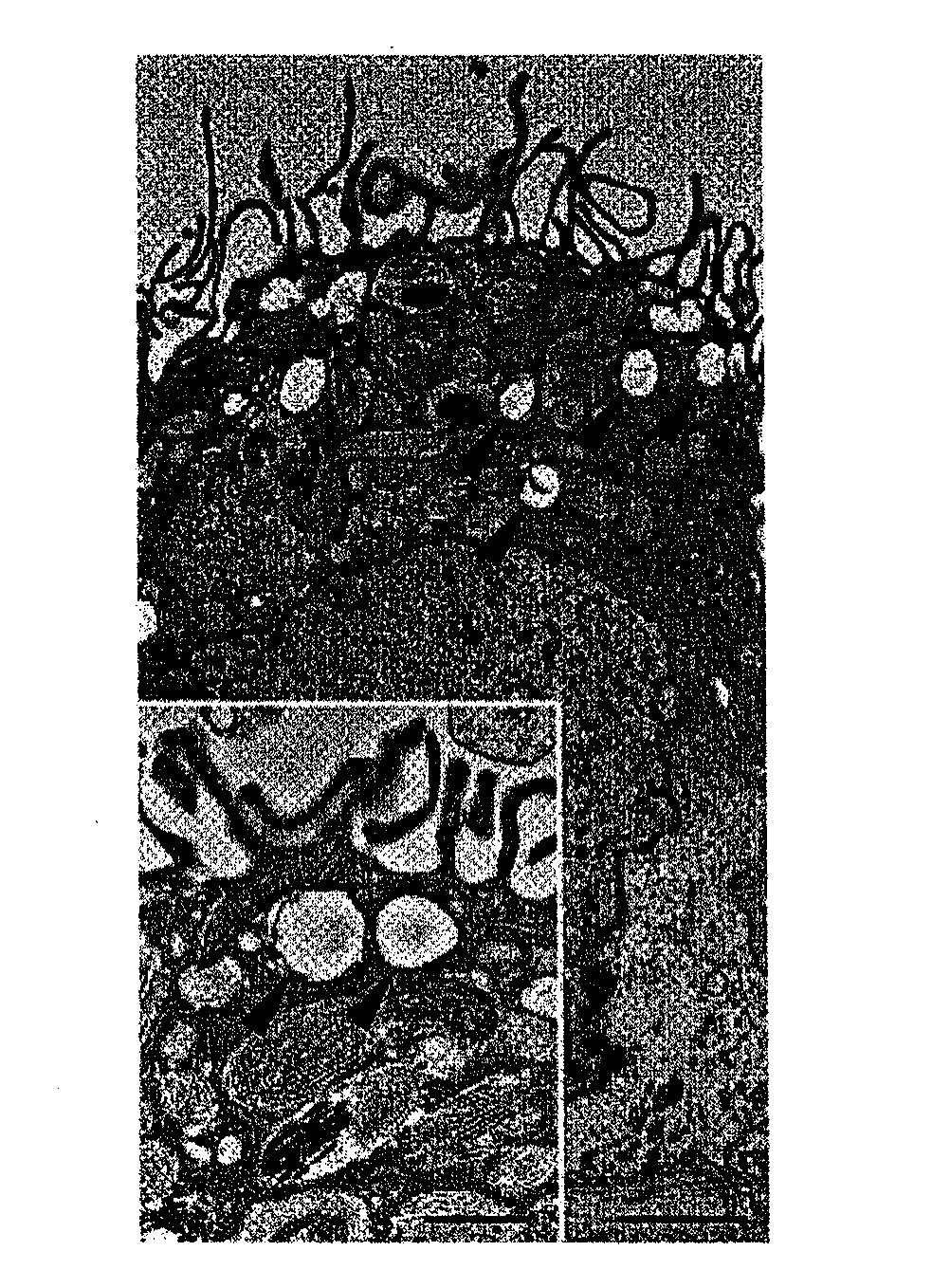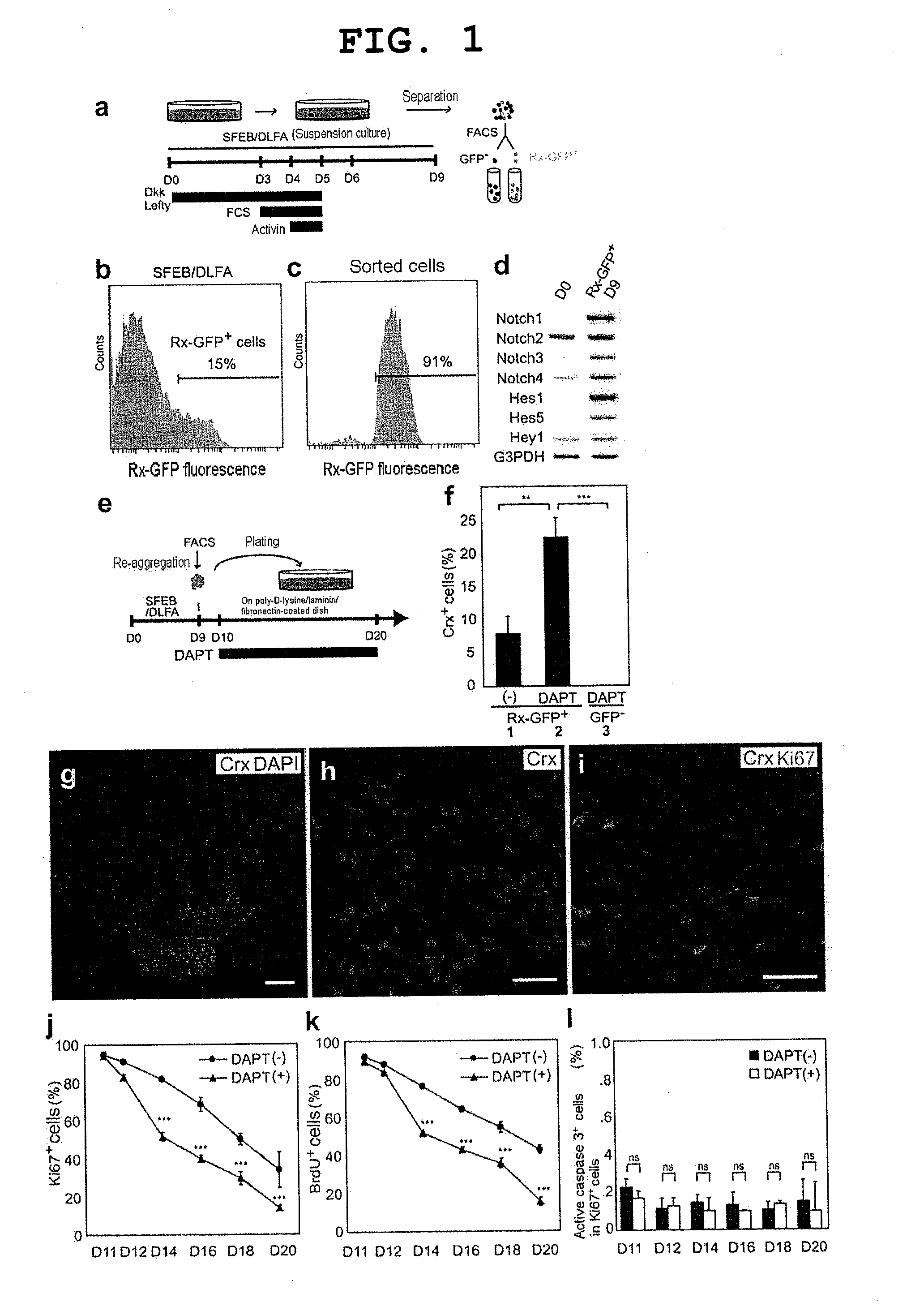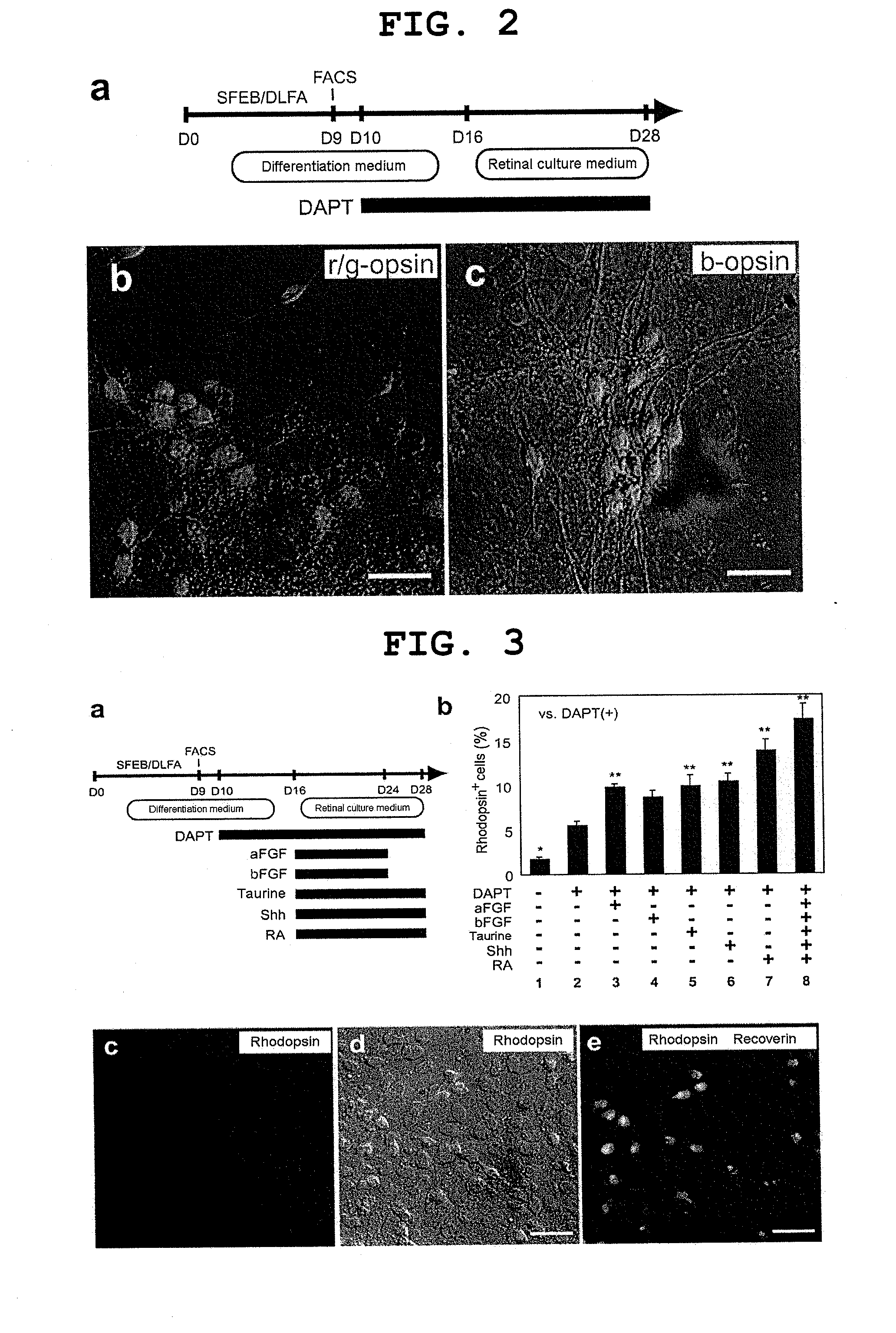Method for induction/differentiation into photoreceptor cell
- Summary
- Abstract
- Description
- Claims
- Application Information
AI Technical Summary
Benefits of technology
Problems solved by technology
Method used
Image
Examples
example 1
Methods
Cell Culture
[0140]Methods for mouse ES cell maintenance and differentiation in SFEB conditions were previously reported (reference documents A7, 20). For the sake of the SFEB / DLFA, Dkk1 (R & D Systems, 100 ng / ml, during days 0-5), LeftyA (R & D Systems, 500 ng / ml, during days 0-5), 5% FCS (JRH Biosciences, during days 3-5), and Activin-A (R & D Systems, 10 ng / ml, during days 4-5) were added to a differentiation medium (G-MEM, 5% KSR, 0.1 mM non-essential amino acids, 1 mM pyruvic acid, and 0.1 mM 2-mercaptoethanol) (reference document A6).
[0141]For FACS (see below), until day 9, cell aggregates were incubated in a differentiation medium under suspension culture conditions. After FACS, 1−2×104 sorted cells were re-suspended in a differentiation medium containing 10% FCS, and to produce re-aggregated pellets, the suspension was centrifuged at 800 g for 10 minutes. After cultivation at 37° C. for 1 hour, three to five re-aggregated pellets per cm2 were replated on a poly-D-lysin...
example 2
Methods
Maintenance of Undifferentiated Monkey ES Cells
[0158]Two independent cell lines of cynomolgus monkey ES cells (CMK6 and CMK9) were maintained as described previously (reference documents B26, 28, 29). In summary, undifferentiated ES cells were maintained on a feeder layer of mitomycin C-treated mouse embryonic fibroblasts (STO cells). The STO cells were incubated with 10 μg / mL mitomycin C (Wako, Osaka, Japan) for 2 hours and plated on gelatin-coated dishes. The undifferentiated monkey ES cells were incubated in a DMEM / F-12 (Sigma, St. Louis, Mo.) supplemented with 0.1 mM 2-mercaptoethanol (Sigma), 0.1 mM non-essential amino acids (Sigma), 2 mM L-glutamine (Sigma), 20% knockout serum replacement (KSR; Lot.1139720 and 1219101, GIBCO), 1,000 units / ml leukemia inhibitor (ESGRO; Chemicon, Temecula, Calif.) and 4 ng / ml basic fibroblast growth factor (Upstate Biotechnology, Lake Placid, N.Y.). ES cells were passaged every 3 days using 0.25% trypsin (GIBCO) in PBS supplemented with 1...
example 3
[0180]Mouse ES cells were cultured in the presence of SB-431542 (0.1 to 10 μM) and / or CKI-7 (1 to 100 μM) under SFEB conditions. Five days after the start of the culture, the cells were recovered and re-suspended in a fresh differentiation medium, and, to produce re-aggregated pellets, the suspension was centrifuged at 800 g for 10 minutes. After cultivation at 37° C. for 1 hour, three to five re-aggregated pellets per cm2 were replated onto poly-D-lysine / laminin / fibronectin-coated culture slides, along with differentiation medium. After cultivation for 5 days, the cells were fixed and stained with anti-βII tubulin antibody, and the ratio of βII tubulin-positive cells was determined under microscopy. The other experimental conditions were the same as those for Example 1.
[0181]As a result, with the addition of SB-431542 or CKI-7, the number of βII tubulin-positive cells increased (FIG. 10). This shows that SB-431542 and CKI-7 are each capable of enhancing differentiation of neuronal ...
PUM
 Login to View More
Login to View More Abstract
Description
Claims
Application Information
 Login to View More
Login to View More - R&D
- Intellectual Property
- Life Sciences
- Materials
- Tech Scout
- Unparalleled Data Quality
- Higher Quality Content
- 60% Fewer Hallucinations
Browse by: Latest US Patents, China's latest patents, Technical Efficacy Thesaurus, Application Domain, Technology Topic, Popular Technical Reports.
© 2025 PatSnap. All rights reserved.Legal|Privacy policy|Modern Slavery Act Transparency Statement|Sitemap|About US| Contact US: help@patsnap.com



